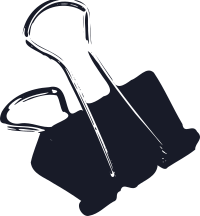I’m not the kind of person that breaks large projects into small, manageable pieces. I procrastinate until I’m inspired and then plug away at it until it’s done.
That said, the photo gallery on geraldprokop.com is a huge pain in the ass. When I rewrote my whole site in PHP, I left the photo gallery in plain old awkward HTML, and as a result, just adding one photo to the gallery requires me to overstay my welcome in my left brain. So last night I figured I could surf around and find a simple set of PHP pages to plug into my page that would allow me to keep the same design and be able to update it more easily.
I was up until nearly 6 am with no progress, but I noticed something. There are two sides to a spectrum: “easy to use” and “easy to understand.” I found that most of the scripts and programs I downloaded fell on the “easy to use” side. Most of these boasted unlimited customizability without going into the code, and an endless list of features (which I didn’t need.) The ones I tried to set up would’ve taken more work to simplify to my needs than building a whole site from scratch. The rest were so awkward and bug-infested that I didn’t even try.
I noticed this with Blogger. It was really easy to set up and use, but you’re limited to the structure that they allow you. Everything is easy to cusomize as long as it’s something they allow you to customize in the first place.
WordPress was a different story, representing the “easy to understand” side of the spectrum. If you know a little bit about the structure of HTML, PHP and CSS, you can build a WordPress theme. Everything is out in the open and through trial and error you can figure it out. With Blogger, I think you’d have to hack into their server and go through restricted files to find out where your bugs are coming from.
Just something I’m generally becoming aware of: we make things hopelessly complex and illogical, in order to make things “easy.” Finally this morning I stumbled upon a simple piece of PHP software called “Gallery Thingie.” Once you set it up, it looks like there’s not much you can do with it. There’s no template editor, no themes, and I didn’t have to create a database. Just three PHP files: one for settings, a gallery page and an admin page. It’s super trasnsparent and easy to just pick out the tags and replace your old HTML with.
